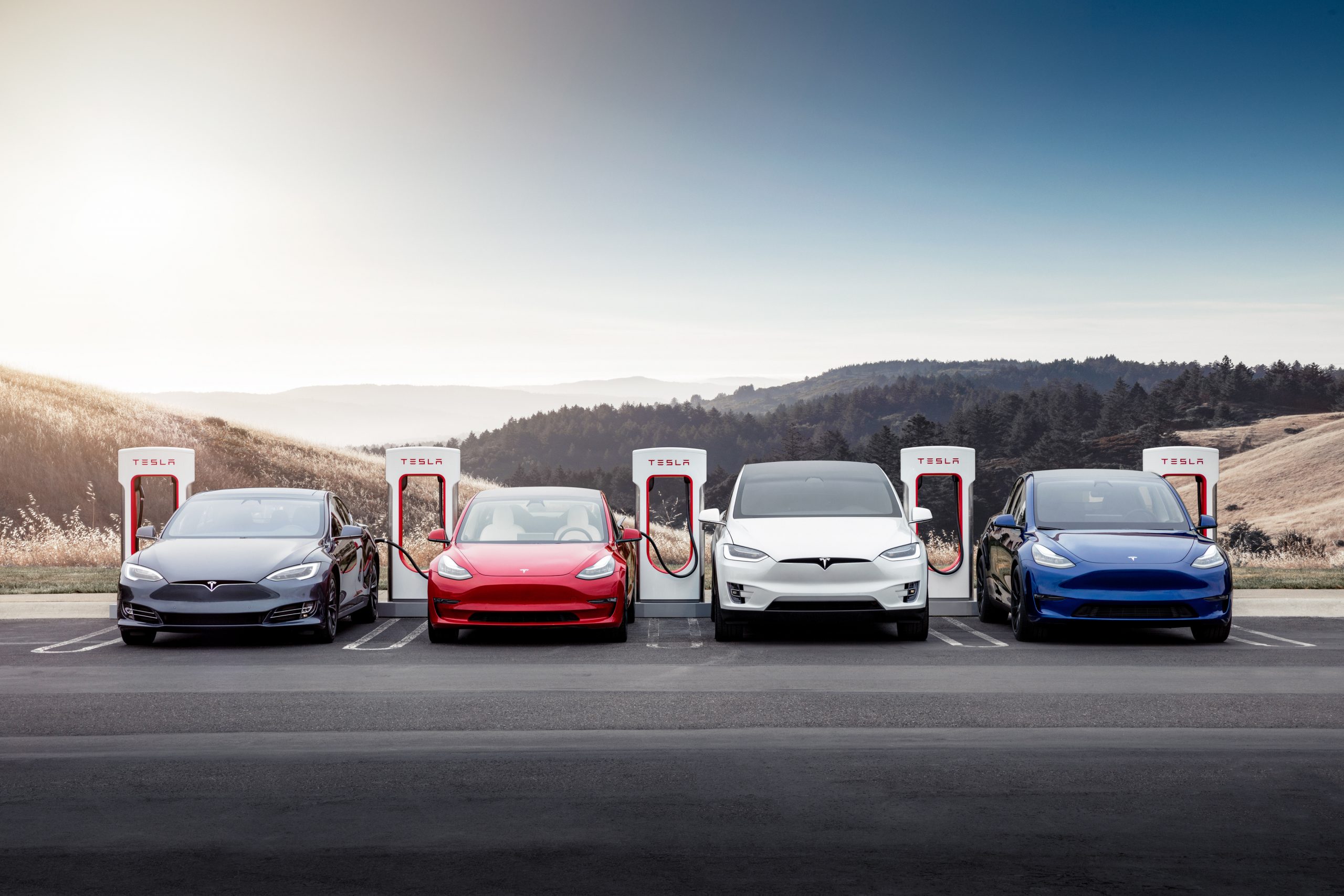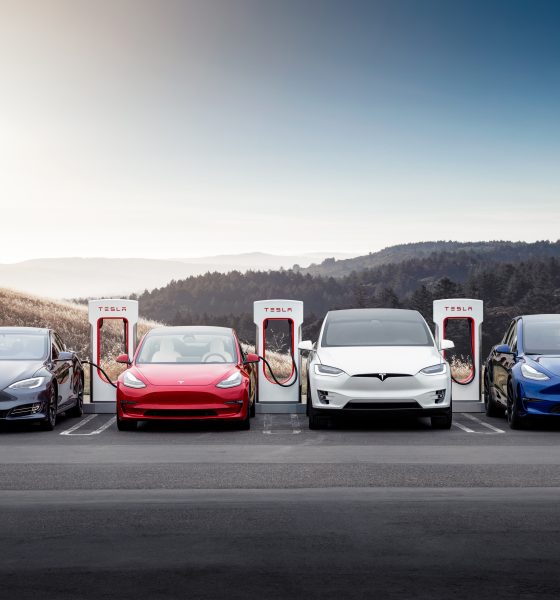

Investor's Corner
Dissecting Tesla’s Q3 2022 delivery count, and why it missed expectations
Tesla (NASDAQ: TSLA) released its Delivery and Production numbers for Q3 2022 on Sunday, and while the automaker delivered its most productive quarter as a company yet, it missed Wall Street’s expectations. But, there’s a lot more to take away from the figures than just a company record and a miss on analyst predictions.
For those who missed the press release, Tesla stated on Sunday morning that it had delivered 343,830 vehicles in Q3 2022, with 325,158 of them being Model 3 and Model Y, and the remaining 18,672 being Model S and Model X. Tesla reported that it produced over 22,100 vehicles more than it delivered, citing supply chain and logistics challenges as the culprit for the miss in deliveries. “As our production volumes continue to grow, it is becoming increasingly challenging to secure vehicle transportation capacity and at a reasonable cost during these peak logistics weeks,” it said regarding the final few weeks of the quarter, which have historically been where the company makes more deliveries compared to other weeks due to its end-of-quarter sales push.
Tesla Q3 2022 vehicle delivery and production results: 344k delivered and 365k produced
There’s more to Q3, and here’s why:
Tesla still showed growth, rebounding from a miss in Q2
Tesla missed quarterly delivery growth for the first time in two-and-a-half years in Q2 2022. This was due to “ongoing supply chain challenges and factory shutdowns beyond our control,” Tesla said. As Gigafactory Shanghai battled shutdowns, Tesla clawed its way back to over 254,600 deliveries but did not sustain its streak of consecutive quarters with proven growth.
Nevertheless, Tesla beat Q2 handily and delivered more vehicles in Q3 than it ever has before, and it should. With two new production facilities launched this year in Austin and Germany, Tesla should be on the path to quarterly delivery and production growth for several years. This should not plateau for several years if things run ideally and Tesla, in a perfect world, would not experience any unforeseen interruptions in production. However, the world has weird plans, and the last two years are proof of that.
Tesla’s rebound to a new quarterly record is undoubtedly putting the company back on the right track. As Q4 begins, the final three months of 2022 will be Tesla’s final chance to not only establish another quarter of growth, but also a chance to beat analyst expectations, which it has done nearly every quarter since 2019.
Model S and Model X production reached its highest levels in three years
Tesla delivered 18,672 Model S and Model X vehicles last quarter, what Sawyer Merritt recognized as the most since Q4 2019.
This is interesting to note, as the vehicles have been in increased demand for the past year and a half since the release of the “Refreshed” and Plaid versions of the cars. Tesla has struggled to ramp and complete deliveries of the Model S and Model X since releasing the new trim levels, but the growth shows that, while they’re still “sentimental,” as CEO Elon Musk said, consumers are still interested in Tesla’s two flagship vehicles.
Tesla is not immune to supply chain issues. They are struggling like other automakers
Tesla put a paragraph in its press release explaining the “lighter” delivery figure it reported on Sunday:
“Historically, our delivery volumes have skewed towards the end of each quarter due to regional batch building of cars. As our production volumes continue to grow, it is becoming increasingly challenging to secure vehicle transportation capacity and at a reasonable cost during these peak logistics weeks. In Q3, we began transitioning to a more even regional mix of vehicle builds each week, which led to an increase in cars in transit at the end of the quarter. These cars have been ordered and will be delivered to customers upon arrival at their destination.”
Tesla is not immune to supply chain issues, despite being incredibly vertically integrated. It seems as if the company did not necessarily get the timing right on some of the deliveries planned for the end of Q3, which bodes negatively for that quarter. However, it is a great way to start Q4, and investors can likely expect an extremely strong final quarter due to this, and the company’s notoriety of having the final three months of the year be its strongest.
Tesla is feeling the heat from the miss on Wall Street. At the time of writing, shares were down over 8 percent on the day.
Disclosure: Joey Klender is a TSLA Shareholder.
I’d love to hear from you! If you have any comments, concerns, or questions, please email me at joey@teslarati.com. You can also reach me on Twitter @KlenderJoey, or if you have news tips, you can email us at tips@teslarati.com.

Investor's Corner
Tesla stock closes at all-time high on heels of Robotaxi progress

Tesla stock (NASDAQ: TSLA) closed at an all-time high on Tuesday, jumping over 3 percent during the day and finishing at $489.88.
The price beats the previous record close, which was $479.86.
Shares have had a crazy year, dipping more than 40 percent from the start of the year. The stock then started to recover once again around late April, when its price started to climb back up from the low $200 level.
This week, Tesla started to climb toward its highest levels ever, as it was revealed on Sunday that the company was testing driverless Robotaxis in Austin. The spike in value pushed the company’s valuation to $1.63 trillion.
Tesla Robotaxi goes driverless as Musk confirms Safety Monitor removal testing
It is the seventh-most valuable company on the market currently, trailing Nvidia, Apple, Alphabet (Google), Microsoft, Amazon, and Meta.
Shares closed up $14.57 today, up over 3 percent.
The stock has gone through a lot this year, as previously mentioned. Shares tumbled in Q1 due to CEO Elon Musk’s involvement with the Department of Government Efficiency (DOGE), which pulled his attention away from his companies and left a major overhang on their valuations.
However, things started to rebound halfway through the year, and as the government started to phase out the $7,500 tax credit, demand spiked as consumers tried to take advantage of it.
Q3 deliveries were the highest in company history, and Tesla responded to the loss of the tax credit with the launch of the Model 3 and Model Y Standard.
Additionally, analysts have announced high expectations this week for the company on Wall Street as Robotaxi continues to be the focus. With autonomy within Tesla’s sights, things are moving in the direction of Robotaxi being a major catalyst for growth on the Street in the coming year.
Elon Musk
Tesla needs to come through on this one Robotaxi metric, analyst says
“We think the key focus from here will be how fast Tesla can scale driverless operations (including if Tesla’s approach to software/hardware allows it to scale significantly faster than competitors, as the company has argued), and on profitability.”

Tesla needs to come through on this one Robotaxi metric, Mark Delaney of Goldman Sachs says.
Tesla is in the process of rolling out its Robotaxi platform to areas outside of Austin and the California Bay Area. It has plans to launch in five additional cities, including Houston, Dallas, Miami, Las Vegas, and Phoenix.
However, the company’s expansion is not what the focus needs to be, according to Delaney. It’s the speed of deployment.
The analyst said:
“We think the key focus from here will be how fast Tesla can scale driverless operations (including if Tesla’s approach to software/hardware allows it to scale significantly faster than competitors, as the company has argued), and on profitability.”
Profitability will come as the Robotaxi fleet expands. Making that money will be dependent on when Tesla can initiate rides in more areas, giving more customers access to the program.
There are some additional things that the company needs to make happen ahead of the major Robotaxi expansion, one of those things is launching driverless rides in Austin, the first city in which it launched the program.
This week, Tesla started testing driverless Robotaxi rides in Austin, as two different Model Y units were spotted with no occupants, a huge step in the company’s plans for the ride-sharing platform.
Tesla Robotaxi goes driverless as Musk confirms Safety Monitor removal testing
CEO Elon Musk has been hoping to remove Safety Monitors from Robotaxis in Austin for several months, first mentioning the plan to have them out by the end of 2025 in September. He confirmed on Sunday that Tesla had officially removed vehicle occupants and started testing truly unsupervised rides.
Although Safety Monitors in Austin have been sitting in the passenger’s seat, they have still had the ability to override things in case of an emergency. After all, the ultimate goal was safety and avoiding any accidents or injuries.
Goldman Sachs reiterated its ‘Neutral’ rating and its $400 price target. Delaney said, “Tesla is making progress with its autonomous technology,” and recent developments make it evident that this is true.
Investor's Corner
Tesla gets bold Robotaxi prediction from Wall Street firm
Last week, Andrew Percoco took over Tesla analysis for Morgan Stanley from Adam Jonas, who covered the stock for years. Percoco seems to be less optimistic and bullish on Tesla shares, while still being fair and balanced in his analysis.

Tesla (NASDAQ: TSLA) received a bold Robotaxi prediction from Morgan Stanley, which anticipates a dramatic increase in the size of the company’s autonomous ride-hailing suite in the coming years.
Last week, Andrew Percoco took over Tesla analysis for Morgan Stanley from Adam Jonas, who covered the stock for years. Percoco seems to be less optimistic and bullish on Tesla shares, while still being fair and balanced in his analysis.
Percoco dug into the Robotaxi fleet and its expansion in the coming years in his latest note, released on Tuesday. The firm expects Tesla to increase the Robotaxi fleet size to 1,000 vehicles in 2026. However, that’s small-scale compared to what they expect from Tesla in a decade.
Tesla expands Robotaxi app access once again, this time on a global scale
By 2035, Morgan Stanley believes there will be one million Robotaxis on the road across multiple cities, a major jump and a considerable fleet size. We assume this means the fleet of vehicles Tesla will operate internally, and not including passenger-owned vehicles that could be added through software updates.
He also listed three specific catalysts that investors should pay attention to, as these will represent the company being on track to achieve its Robotaxi dreams:
- Opening Robotaxi to the public without a Safety Monitor. Timing is unclear, but it appears that Tesla is getting closer by the day.
- Improvement in safety metrics without the Safety Monitor. Tesla’s ability to improve its safety metrics as it scales miles driven without the Safety Monitor is imperative as it looks to scale in new states and cities in 2026.
- Cybercab start of production, targeted for April 2026. Tesla’s Cybercab is a purpose-built vehicle (no steering wheel or pedals, only two seats) that is expected to be produced through its state-of-the-art unboxed manufacturing process, offering further cost reductions and thus accelerating adoption over time.
Robotaxi stands to be one of Tesla’s most significant revenue contributors, especially as the company plans to continue expanding its ride-hailing service across the world in the coming years.
Its current deployment strategy is controlled and conservative to avoid any drastic and potentially program-ruining incidents.
So far, the program, which is active in Austin and the California Bay Area, has been widely successful.








